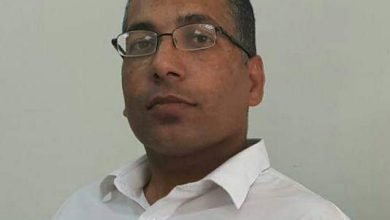Palestinian statehood will always be the solution

Saudi Arabia, followed by Bahrain, the UAE and Kuwait, cut their ties with Lebanon last week because it had fallen under the control of the resistance axis of Hezbollah and Iran. Thirty years after the Madrid Peace Conference of 1991, the region is still divided along a fault line that is principally defined by the acceptance or rejection of the idea of Arab-Israeli peace.
The division is fueled by the plight of Palestinians, who are either under occupation in the West Bank, under siege in Gaza or stateless in refugee camps. If we had a map of the Middle East color coded according to which camp dominates, then the boycott of Lebanon abandons it to the resistance camp. Only a Palestinian state can be a game-changer between the two camps, pulling the rug from under the feet of the rejectionists.
Afif Safieh served as Palestinian ambassador to London, Washington and Moscow, among other capitals, and is known for his wit and humor. He once replied to a diplomat who told him that Oslo, meaning the Oslo Accords, put Palestine on the map by saying: “My friend, it is Palestine that put Norway on the map.” The Madrid conference, which concluded on Nov. 1, 1991, also appeared on that map, together with a long list of other cities and people that are now historically associated with the question of Palestine.
Algiers is associated with the Palestinian declaration of independence in November 1988, when Yasser Arafat accepted, for the first time, UN Security Council Resolution 242 of 1967, thereby recognizing the existence of Israel and seeking a two-state solution. In Paris a year later, he was asked if this did not contradict the Palestinian Liberation Organization charter and he replied, in French, that the charter was “caduc.” This made everybody scramble for their dictionaries and discover a variant of the Latin word “caducus,” meaning fallen or no longer standing.
This, together with the aftermath of the first Gulf War, led to Madrid, which was the first time that Arab and Israeli leaders had met face to face in the same room. The Palestinians were there as part of a Jordanian delegation as the Israelis refused to meet with them alone. Hanan Ashrawi made her first dazzling appearance and rumor has it that a member of the Israeli delegation observed her eloquence with concern and said: “We should have insisted that Yasser Arafat was the sole representative of the Palestinians.”
A peace process gazetteer and biographical dictionary would include so many names and places. Oslo is associated with the PLO-Israel secret agreement; then there were the Washington talks, the Annapolis talks, the Moscow talks, and the Camp David talks of 2000, just before the Second Intifada. These were followed by the King Abdullah plan, building on the King Fahd plan, which became the Beirut Declaration and was later called the Arab Peace Initiative. There were also the Clinton Parameters, George W. Bush’s road map for peace, the Israeli Peace Initiative, the clandestine talks of the Tokyo initiative, which later became the Geneva Initiative, and last on the list before complete deadlock were the Kerry Peace Initiative talks.
Businessmen like Leon Charney from Bayonne, New Jersey, and Ronald Lauder, the Estee Lauder cosmetics brand heir, together with academics like Edward Said of Columbia University, all joined the bandwagon. There have been hundreds of initiatives producing literally tons of reports from bilateral tracks, multilateral tracks, track II meetings, the Middle East Quartet, steering committees, working groups, expert groups, focus groups, secret talks, and research projects.
When donors ran out of ideas for acronyms, such as the AHLC (Ad Hoc Liaison Committee), they formed a committee that no one knew the name of, so it became literally “the group with no name,” coordinated by the Canadians. The Middle East peace process also brought us Henry Kissinger’s “step-by-step diplomacy” and James Baker’s “shuttle diplomacy,” as well as slogans like “nothing is agreed until everything is agreed.”
Another story is that of when King Hussein of Jordan and Israeli Prime Minister Golda Meir had their secret rendezvous in 1972. She told him that he must understand that “Israel is a country surrounded by enemies.” His reply was, “How should I know; we are only surrounded by friends,” barely two years after his country was threatened by an invasion from Syria. The image is very different today: A glance at the map shows Israel to be surrounded by more friends than enemies. A clear majority of Arab states are either at peace with Israel or moving toward it.
Another indication of change is that the Arab Spring protests of 2011 were the first time that such demonstrations were not about burning American and Israeli flags. And there is a whole industry of novels, documentaries and books expressing nostalgia for the Jews of the Arab world, harking back to more cosmopolitan times. On the ground, there are two distinct entities and two separate governments, both of which could do with much more separation. Yet, one essential component remains missing: A Palestinian state.
When the Palestinian state was declared in 1988, it was recognized by 78 other nations before the year was out, and that number has since risen to 138. There is almost zero chance that its existence will be formalized by the negotiations between Israel and the PLO. This is mainly because of two conditions: One is that “nothing is agreed until everything is agreed” and the other is that the final status talks will constitute the “end of all claims” for both parties.
There are no two adjacent states that have no problems — the states of Israel and Palestine will simply have more problems than others and some of these problems will be unresolvable for a long time. The existence of two states would be a total game-changer; it would release all the plans, initiatives and ideas that have been proposed and most of the problems would gradually be resolved. Those that can’t be resolved, don’t have to be. It would also undermine the agenda of the resistance axis and give a boost to the other side, including in Lebanon and Iraq, where there are active protest movements against the Iranian-led militias.
ArabNews

